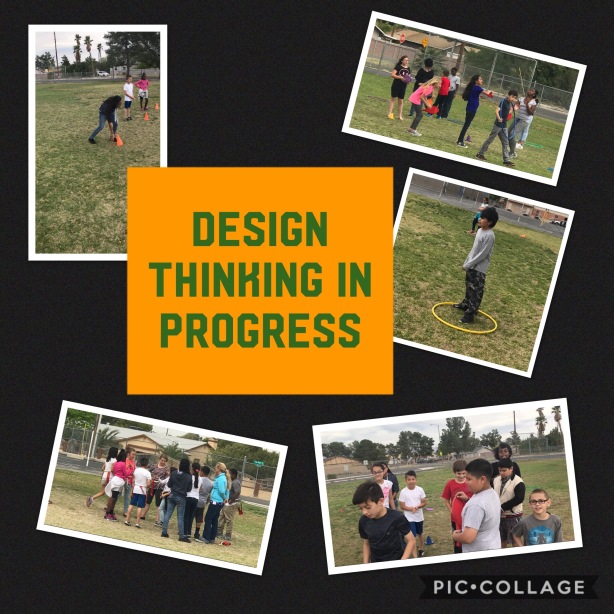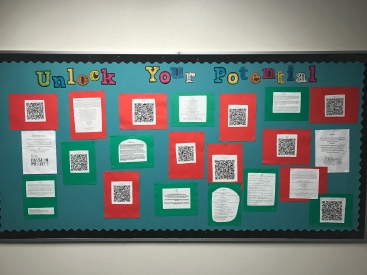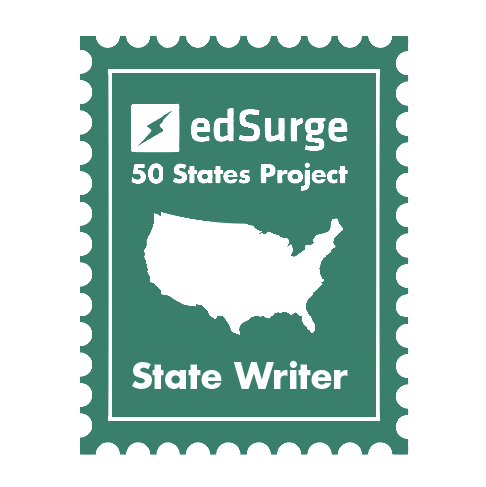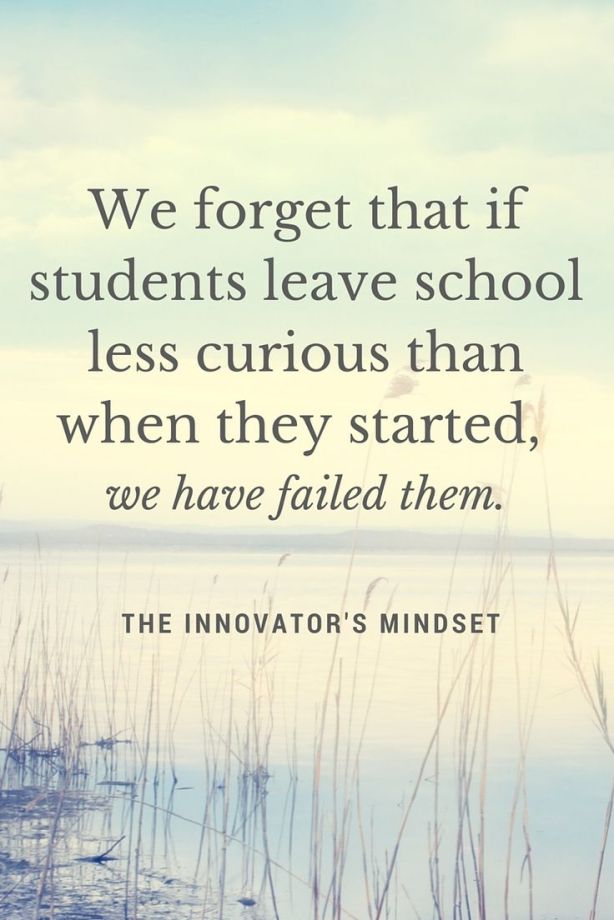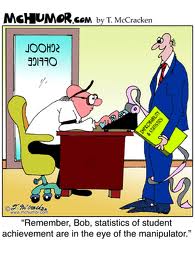I had another blog post written on websites and apps I use in the classroom, but once again I’m pushing that aside.
This is a rather long post, but it contains very valuable information to help empower all learners.
I have been reading Learn Like a Pirate: Empower Your Students to Collaborate, Lead, and Succeed and participating in the Learn Like a Pirate Book Club on Facebook . I highly recommend it to anyone wanting to transform their classroom into an empowered student-led classroom. Paul Solarz has something amazing to share with all of us.
Furthermore, Elizabeth Chapman,who is in the #Learnlap book club, has written some excellent blog posts about experiences in her class utilizing Learn Like A Pirate and other amazing things happening in her classroom and beyond.
I have had a student-led classroom for quite sometime. I have taught 2nd, 3rd, and 5th grade and have been successful with all three grades.
The key is building relationships and building trust with the learners. Building a community of learners is possible if those relationships are established early in the year and maintained throughout the year. We have had a few mottos: Finish Strong, Together We are One Together, We Are Family, and If We Believe- We will Achieve .
Capturing Kids Hearts and the Social Contract are crucial to building a powerful classroom climate and culture. I know there are other things out there like CHAMPS OR Be Kind; however, CKH has been tremendously effective with our learners.
Six or more years ago the Clark County School District here in Las Vegas, NV. sent many schools to a two day training presented by The Flippen group called Capturing Kids Hearts. My first thought “Ugh, another training, another thing to implement, how much more can I take ?” However, the Training is just what I needed to tweak my classroom management skills and to create a student-led classroom.
Unfortunately, most educators don’t use Capturing Kids Hearts anymore or if they do they use it half heartedly which doesn’t work. If you do a social contract it must be done with integrity and consistency.
I highly recommend the two day training, but it’s costly and if you follow these steps and believe in the social contract then you will be able to implement it. I’m not getting paid to endorse CKH, but it works.
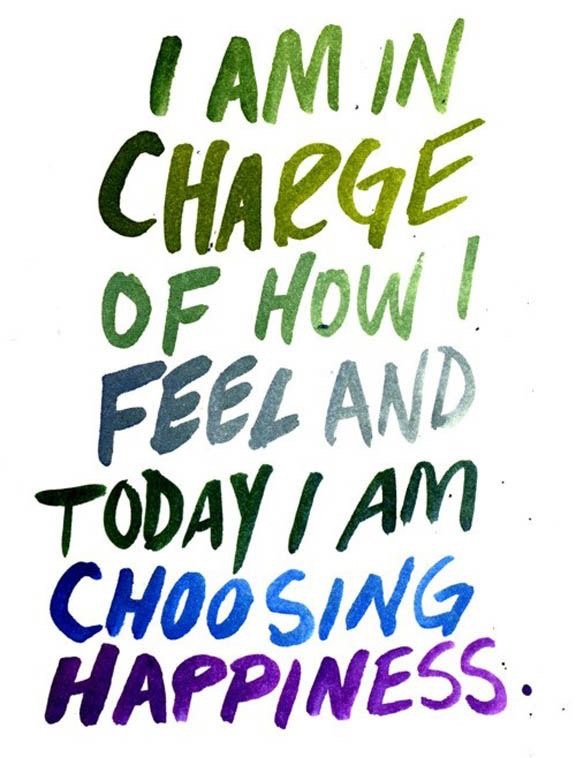
A few things we do in our leaning environment that are not mentioned in the Capturing Kids Hearts material.
1. I greet the students at the door everyday. We practice the art of a good handshake and eye contact as we go along. This gives me a feel of where the learners are at and allows for a friendly safe atmosphere to be established. You can tell a lot by how someone is feeling by a simple handshake. We also have a positive message with a hand on it outside the door the learners give the paper hand a high five as they enter as well. It has to do with creating relationships.
2. Each morning we start off our day doing Good Things. We play the song Tell Me Something Good originally by Rufus and Chaka Khan we play the Pjnk version from the movie Happy Feet. The Good Thing person or people for the week either have the random name picker or they pick 3-4 learners to share something good. Some of the intoroverted studnts have a hard time with this at first, so they mostly say things like “I’m here today.” Or “I’m on time.” Nonetheless it creates an atmosphere of positive thinking for the day. The class usually says “It’s going to be a good day!” After each person shares, sometimes there are high fives involved as well.

3. After the Social Contract is created which is about week three of the school year. We create affirmation bags they are paper lunch bags we have time to decorate them and then put their name on the front they are displayed I Netherlands classroom at a reasonable height to deliver the affirmations. . Affirmations are quick positive informal notes to help lift each other up. Students write 4-5 affirmations a week and it’s on ration basis so all students get affirmations. The affirmations must have the student they are writing to on it along with the name of the person who wrote it. Affirmations need to be genuine, so things like you have nice shoes, hair, pencil, or trivial things are not aloud. Before putting affirmations in the bag the affirmation checker which is a job must check the affirmation for questionable content. After the affirmations have been checked the students put the affirmations in the appropriate bag. I have been doing affirmations for 6 years and we have never had anything inappropriate or hurtful end up in an affirmation bag.
On Fridays students check their affirmation bags and read their affirmations. The affirmation bags are hung back up for the next week. This takes time, but I believe it’s powerful in creating a positive and dynamic learning environment where learners feel valued and cared for by all stakeholders.
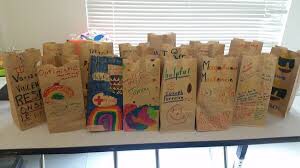
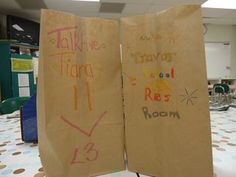
4. Important Social Contract – The Social Contract shouldn’t be constructed during the first week of school. You have to build rapport before diving into the contract. When you do take at least three days or more on building the Social Contract. I do a question a day usually. Spend at least 20 minutes having groups decide the answers to the questions don’t make it a timed activity if there is dialogue related to the question have them continue. I have groups of 4 with chart paper to write down their responses. I will ask studemts well what does respect look like ? My idea of respect may be different than someone else’s, so it’s important to have them dig deeper into what they mean.
The Social Contract is an agreement of behavior between all parties not rules set forth by the teacher. After having groups discuss the four questions, which are found below, we come together as a group to start constructing the Social Contract. We elect a scribe to do the writing for the whole group. The point is to let the students construct the Social Contract. Correct spelling is not essential and we usually write it on a big poster board, so it can be seen anywhere in the room.
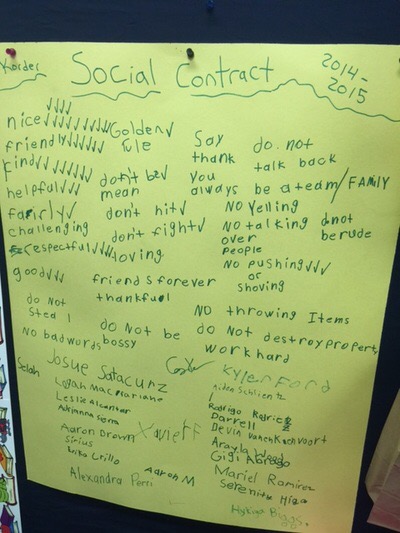
Only a few words is put on the Social Contract not sentences things like Respect, Golden Rule, no hitting, whatever they came up with. Give a chance for all groups to participate and add their thoughts. Ask them to elaborate by asking things well what does Nice mean ? Or what does no bad words mean ? If words are repeated put a check by the word to show that everyone had a say. When it’s complete ask if there is something else that should be added ? Neatness is not the point. When all done have each member of the class sign it.
The Social Contract stays in the room, but it’s enforced throughout the day, lunch, specials, in the hall, and in assemblies. I have a student take the actual social contract to specials , once, to get the specialist to understand the behavioral expectations agreed upon and to have them sign the contract as well.
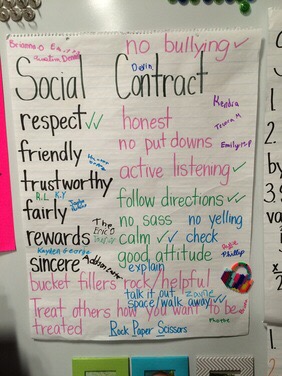
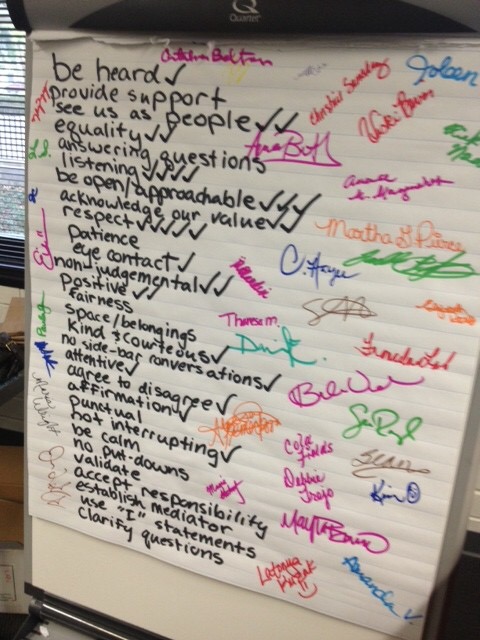
Also when guests arrive in the class have a greeter established to welcome the guest and ask them to sign the contract. Guest only need to sign the contract once, but the greeter should always greet guest with firm handshake whenever they enter.
I have found this very effective in developing a student-led classroom and it’s extremely effective.
The information below is straight from Capturing Kids Hearts and are not my words. Here is a PowerPoint I did not create, of CKH. (They use the Acronym EXCEL so many acronyms in education I can’t keep up)
The primary focus of Capturing Kids’ Hearts is to develop healthy relationships between
members of a school’s educational community and to teach effective skills that help participants:
* Develop self-managing classrooms and decrease discipline issues through innovative techniques such as a social contract
•Decrease delinquent behaviors such as disruptive outbursts, violent acts, and drug use
•Utilize the EXCEL Teaching Model™ and reinforce the role of emotional intelligence in teaching
•Build classroom rapport and teamwork to create a safe, trusting learning environment
Capturing Kids’ Hearts
Primary Skills
1. The EXCEL Leadership/Relationship/Teaching Model™
2. The Social Contract
3. Four Questions for Misbehavior
4. Four Questions for Disrespect
5. SOLER Listening Skills
The EXCEL Leadership/Relationship/Teaching Model™
The steps outlined in The EXCEL Teaching Model™ prepare teachers to effectively impact their students each time they come together, from the beginning of class to the end.
EXCEL
•E Engage
•X Xplore
•C Communicate
•E Empower
•L Launch
Step 1. Engage
* This first step is essential to the success of the day. It begins when we greet the students at the door with a handshake at the beginning of each class. We draw them into a relationship with us upon which we can build as the class progresses.
•There are several things we accomplish with this step: we start the day with a positive greeting, affirm each student, welcome the students into our class, and give them our full attention, first thing.
•When we start the class with Engage, we are preparing the way for the students to be involved with us in the learning process.
Meeting and Greeting Skills :
•Facial expression: relaxed, smiling, welcoming
•Tone of voice: 38% of what we communicate is through tone of voice
•Posture: lean in, turn slightly sideways to be nonthreatening
•Handshake: firm, yet comfortable; initiate the handshake
•Level of relaxation: be confident, but not stressed or hurried
•Dress/grooming: professionally dressed, with good hygiene
•Energy: positive and energetic, confident
•Eye contact: look other person in the eye and pay attention to the person’s needs
Step 2. Xplore
•This second step lays the foundation for the content of the class which is to follow. We get in touch with where the students are personally, emotionally, and academically.
•Students are our “customers.” We must identify their needs before we can serve them effectively. Do the products/services we deliver meet the needs of our customers?
•The skills we use when we Xplore with our students are much like those of a counselor: listening, attending, conveying empathy, probing, and asking open-ended questions.
•A successful Xploration can take place only in a secure environment. We do not disclose our needs, whether personally or academically, until we feel safe from ridicule and rejection. Learning cannot take place until we are able to discuss what we don’t know.
Step 3. Communicate
•This step is the Communication of the content of the class. The teacher addresses the needs discovered in the previous step.
•A two-way process, it is not simply the passing along of information and material, but instead it is a dialogue between teacher and students. The process is dynamic and experiential, requiring the teacher to be facilitator and resource to the class. Teachers who are powerful Communicators in this model are teambuilders.
•A certain degree of order is necessary, but flexibility and creativity are essential, as well. Teachers must be able to Communicate the content of their course in a way that is captivating, creative, and responsive to their “audience.”
•A very important task in this step is the ability to translate that which is being taught into “real world” benefits. The students must be able to see how their studies will assist them in their future efforts at earning a living and finding meaning for their lives. When students object to the need to learn certain material or skills, the teacher, like a good salesman, must be able to overcome their objections and convey the need for learning to take place.
Step 4. Empower
•Empowerment occurs when students gain the ability to “use and do” the things they have been taught. Possessing the same skills as the teacher is the goal of education. When we can do what we have been taught, then we are truly Empowered.
•The students learn information or a technique in the Communication step, and then in this step they practice and apply what they have learned until it becomes a skill. Teachers who operate from an Empowerment perspective desire that their students know all they can about the subject…that the Teachers see their students in terms of what they are becoming. They see themselves as the resource to help their students become.
•A key to this step is to build an atmosphere of trust in which the students feel free to fail while going through the learning process. With the class social contract in place, everyone knows the rules—what is acceptable and what is not, as well as the consequences. This common understanding provides for the students the foundation for positive interaction with the teacher and with each other. In this environment the students are Empowered because they experience encouragement and support.
Step 5. Launch
•In the EXCEL Teaching Model™, Launching has to do with the way we end and send. It is the way teachers end a classroom experience and the way they send their charges forth to face the future. This is vastly different from just having students rush out the door when the bell rings.
•The teacher prepares the class for “liftoff” by summarizing what has occurred in class that day and by getting commitments from students to follow the “flight plan.” Prelaunch questions would include:
•What did we do and discuss today?
•What is its relevance to you, both for now and for your future?
•How are you going to use these skills before our next class?
•What will result if you don’t use these skills?
•What will result if you do use these skills?
Every great speaker and teacher realizes the importance of ending on a powerful note. We must be able to effectively use quotes, anecdotes, poems, stories from our own experiences, and other motivational stories to drive home the points we want our students to remember. Passion is the thrust we use to propel our students toward their destination. In the words of Og Mandino, “My last must be my best.”
•E Engage: Handshake, Welcome, Affirm, Model
•X Xplore: Customer’s Needs, Listening Skills, Safe Environment
•C Communicate: Content, Dialogue, Flexibility, “Real World”
•E Empower: Use and Do, Develop Skills, Becoming, Encouragement
•L Launch: End and Send, Summary, Commitment to Action, Passion
The Social Contract
The Social Contract is designed to let all participants in a classroom or school know what behavior is acceptable and what is not. It is an agreement of behavior to promote a self managing class. The primary questions to consider when developing a social contract are:
1. How do you want me to treat you?
2. How do you want to treat each other?
3. How do you think I want to be treated?
4. How will we handle violations of the contract?
Using the Social Contract, the teacher is able to create more self-managing classrooms as each student takes responsibility for his or her own behavior.
Create BUY-IN
•Remember to sell the contract
•How many of you getting tired of the teacher nagging you etc?
•Well I am not going to do that because you are all mature young adults.
•This is OUR classroom, so we are going to decide how to treat each other and you are going to help each other follow what we decide.
•The best part is if you help each other, and I do not have to get involved, there will be no consequences!
•Work on team work
Building a Social COntract
•Put 4-5 students in a group
•Each member is assigned a role: facilitator, scribe, spokesperson, timekeeper, on-task person or affirmer
•Give each group the 4 questions. After each group answers all 4 questions, reconvene the class, but remain in groups.
•Using chart paper and markers ask for a scribe
•Get responses for each question from each group
•After a group reports out their question responses, teacher picks one to discuss
Signals
•Non-verbal – Time Out – Give me 5
•Thumbs up – leader uses with class
•Sidewards thumb – students use with eachother to check themselves
•A signal for fouls
•If it is called it counts
•Not a joke or toy
•Someone can call a foul for someone else
•If a foul called no explanation needed and must give 3 put ups – once the contract is in place you may implement fouls. If a student feels as if their feeling were hurt they may call foul – if a foul is called then the person who fouled must give 3 put ups – say three nice things the other. You have nice shoes, shirt, or material items doesn’t count. Not to be taken lightheartedly.
In order for the Social Contract to work
•It must be referred to constantly – not just an chart on the wall (visit at least once a week)
•It must be used (expectations, fouls, signals)
•It must be modeled
Four Questions for Misbehavior
1. Excuse me . . . What are you doing?
2. What are you supposed to be doing?
3. Are you doing it?
4. What are you going to do about it?
•These questions help the student focus on the behavior, demonstrate that he/she knows what behavior is expected, own up to the fact that he/she is not doing what is expected, and determine what he/she should be doing instead.
Four Questions for Disrespect
1. Excuse me . . . whom are you talking to?
2. How are you supposed to be talking to me?
3. Were you doing it?
4. So, how are you going to talk to me?
SOLER Listening Skills
•The Chinese symbol for the word “listen” involves characters for “ears, eyes, heart, you, and undivided attention”. To listen effectively to another person, you must “listen with your ears, eyes, and heart with your undivided attention”. Sometimes we want to convey that we are listening, but we may not know how to show the other person that we are doing that.
SOLER
S= Square up to the person you are listening to
O= Open posture
L= Lean in
E= Eye contact
R= Relax and Respond
